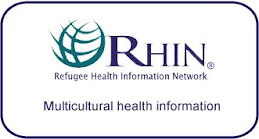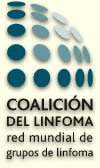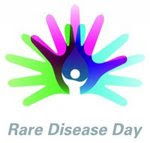AHRQ Innovations Exchange | Recent Events | Vermont Blueprint for Health: Working Together for Better Care
Vermont Blueprint for Health: Working Together for Better Care
AHRQ's Health Care Innovations Exchange held a Webcast titled Vermont Blueprint for Health: Working Together for Better Care on September 25, 2012.
This event featured a video presentation about successful linkages among primary care, public health, and clinical community resources in the state of Vermont. Vermont's Blueprint for Health program provides comprehensive, coordinated care while improving health outcomes and reducing costs.
The video presentation was followed by a panel discussion during which Vermont program staff discussed implementation challenges and potential solutions related to linking clinical care and community resources. The replay of the Webcast, including the panel discussion, will be available shortly.
Related Resources
- Best Practices to Deploy ECM Technologies: Ensure Decisions are Made Based on all the Information, not a Portion of it
- Benefits, User Advantages & Concerns About Cloud Computing
- Better Patient Care: Virtually There
- 5 Tips for Successful Patient Identity Management in Government Agencies
- Event Log Management & Compliance Best Practices: For Government & Healthcare Industry Sectors
Just as a carpenter finishes his work by making sure that his hammers, chisels and saws are clean, sharp and ready for the next project, so should we take pride in and look after our health IT tools and systems. In essence, that’s what we’re doing at this moment, as the health IT community convenes in Washington, DC, for National Health IT Week.
The purpose of National Health IT Week is to raise awareness of the importance of health information technology. We are grateful to HIMSS and the week’s other co-sponsors, the Institute for e-Health Policy and the College of Healthcare Information Management Executives (CHIME), for leading the activities. This is an important annual event, demonstrating for Federal policymakers that health IT is neither an abstract nor experimental activity.
Instead, health IT is embedded in everything we do.
It has become fundamental to the provision of high-quality, patient-centered health care. IT-enabled innovations including (but not limited to) electronic health records (EHRs), clinical decision support systems, mobile health applications, and e-prescribing have become necessary tools in how we take care of patients each day. Endeavors such as patient-centered outcomes research, healthcare-associated infection (HAI) surveillance, disease and care management, and cutting-edge treatments and lab tests all feature IT-enabled applications as core components. In many instances, the practice of modern medicine could not exist without them.
The best part is, this is hardly news. Health IT is an essential part of how we diagnose, provide, monitor and improve health care services.
The Agency for Healthcare Research and Quality (AHRQ) considers this especially gratifying, because for years AHRQ has supported the evidence base behind health IT. Since its inception in 2004, AHRQ’s Health IT Portfolio has funded projects that show health IT’s impact on improving health care decision-making, supporting patient-centered care, coordinating care across transitions, and using electronic exchange of health information.
AHRQ asserted its belief in the relationship between health IT and quality through the creation of its Health IT Portfolio, which embarked on a series of grants and contracts. To date, more than 300 projects have been supported by the Portfolio and have produced important findings, practical tools, individual and organizational talent, and substantively moved the field forward.
In one project, Emergency Medical Service agencies used a web-based quality reporting system and clinical decision support technology to improve the timeliness of care provided to heart attack patients. Other projects included one in which nursing homes used health IT to improve quality; another featured a network of rural hospitals that implemented an EHR system and simultaneously redesigned many aspects of care delivery to improve patient safety.
Where We’re Going: A Focus on the Patient
Today, much of the health IT community’s attention is appropriately directed to meeting Meaningful Use standards in the adoption of EHRs. AHRQ supports its Federal partners in promoting Meaningful Use and overcoming barriers to EHR adoption.
As this transformation takes place, AHRQ remains focused primarily on identifying and filling gaps in knowledge about health IT to help prepare the field for future innovations. With this in mind, projects funded by AHRQ suggest where the field is headed. Examples of innovative AHRQ-funded work include:
• Project ECHO. Clinicians at the University of New Mexico Health Sciences Center are bringing sophisticated treatment for Hepatitis C to patients in rural New Mexico and across the Nation. ECHO (which stands for Extension for Community Healthcare Outcomes) is wisely using available technology, expert training, and real-time feedback to bring state-of-the-art medical knowledge to primary care providers and nurses. Building on this experience, the project has also initiated telemedicine clinics for other complex conditions.
• Project RED. Project RED (Re-Engineered Discharge) at Boston University Medical Center seeks to correct patient safety problems at one of the most vulnerable points of care—discharge from the hospital. Project RED offers tools to improve the discharge process by preparing patients for discharge from the moment they arrive in the hospital. Elements include a “virtual nurse” who simulates face-to-face interaction between a patient and a nurse, based on the patient’s individual medical data.
• Active Aging Research Center. This center in Madison, Wisconsin aims to keep older adults safe and healthy in their homes and communities by developing an integrated system of health IT for seniors and their caregivers. These tools extend the independence and functioning of older adults, keeping them connected with family and friends and reducing unnecessary hospital visits, while ensuring that patients get timely access to the care they need.
What do these projects have in common?
It isn’t the IT itself. Some projects use very sophisticated, newly developed technologies; others rely on technologies that have been around for years. Instead, these projects leverage technology as a means to achieve patient-centered care—tracking and reducing medical errors, bringing care to vulnerable and complex patient groups, and ensuring that every patient gets care according to his or her wishes.
It is true, of course, that health care stakeholders — including providers, plans, purchasers, and government agencies — have been working toward this goal for years, even decades. Today, we believe that goal is within reach, because stakeholders have greater resources to enhance their efforts. AHRQ supports this goal through patient-centered outcomes research, the identification of health care quality deficiencies and disparities, and the development of performance measures to make sure health care providers deliver the highest quality care possible.
Consistent with that latter goal are three recently released AHRQ products that are of special interest to readers of Government Health IT.
One is the Workflow Assessment for Health IT Toolkit, an AHRQ-developed tool that helps health care providers reorganize and improve workflow, recognizing health IT’s likely impact on both clinical and administrative processes. This toolkit is designed for people and organizations interested or involved in the planning, design, implementation, and use of health IT in ambulatory care.
A second is a Toolset for E-Prescribing Implementation in Physician Offices, the purpose of which is to provide physician practices with the knowledge and resources to implement e-prescribing successfully. The toolset includes specific tools to support planning and decision-making, such as surveys to determine whether an organization is ready for e-prescribing, worksheets for planning the implementation and monitoring progress, and templates for communicating the launch to patients.
The third tool, An Interactive Preventive Care Record (IPHR): A Handbook for Using Patient-Centered Personal Health Records to Promote Prevention, offers practical steps for health care professionals to follow when deploying IPHRS as components of EHRs. Sections are targeted for use by practice leaders, informatics staff and practice personnel and provide advice for each team member on selection, implementation and maintenance.
These and other AHRQ health IT products are available for free on our web site, www.ahrq.gov.
A Vision for the Future
HIMSS, CHIME, and the Institute for e-Health Policy all deserve recognition for their leadership in co-sponsoring National Health IT Week. If you are in Washington during the week, we hope that you will join with your colleagues from both the public and private sectors to promote health IT. If policymakers from your area express interest, we hope you will consider inviting them to tour your facility to demonstrate the practical applications of sophisticated technology.
Looking ahead, it’s reasonable to predict that innovation will continue to play a central role in adoption and use of health IT. The private sector will continue to take the lead in searching for ways to use technology to increase quality and lower costs, and AHRQ will continue to support projects that show promise.
Will all of them work? Of course not. The “error” part of trial-and-error is an important part of basic research, and it’s important to learn what doesn’t work on a small scale before implementing new applications on a large scale. But we remain confident that overall, health IT will remain a critically important, and increasingly essential, tool for delivering high-quality health care to individuals and to populations.
Carolyn M. Clancy, MD, is Director of the Agency for Healthcare Research and Quality, Rockville, MD.
The purpose of National Health IT Week is to raise awareness of the importance of health information technology. We are grateful to HIMSS and the week’s other co-sponsors, the Institute for e-Health Policy and the College of Healthcare Information Management Executives (CHIME), for leading the activities. This is an important annual event, demonstrating for Federal policymakers that health IT is neither an abstract nor experimental activity.
Instead, health IT is embedded in everything we do.
It has become fundamental to the provision of high-quality, patient-centered health care. IT-enabled innovations including (but not limited to) electronic health records (EHRs), clinical decision support systems, mobile health applications, and e-prescribing have become necessary tools in how we take care of patients each day. Endeavors such as patient-centered outcomes research, healthcare-associated infection (HAI) surveillance, disease and care management, and cutting-edge treatments and lab tests all feature IT-enabled applications as core components. In many instances, the practice of modern medicine could not exist without them.
The best part is, this is hardly news. Health IT is an essential part of how we diagnose, provide, monitor and improve health care services.
The Agency for Healthcare Research and Quality (AHRQ) considers this especially gratifying, because for years AHRQ has supported the evidence base behind health IT. Since its inception in 2004, AHRQ’s Health IT Portfolio has funded projects that show health IT’s impact on improving health care decision-making, supporting patient-centered care, coordinating care across transitions, and using electronic exchange of health information.
AHRQ asserted its belief in the relationship between health IT and quality through the creation of its Health IT Portfolio, which embarked on a series of grants and contracts. To date, more than 300 projects have been supported by the Portfolio and have produced important findings, practical tools, individual and organizational talent, and substantively moved the field forward.
In one project, Emergency Medical Service agencies used a web-based quality reporting system and clinical decision support technology to improve the timeliness of care provided to heart attack patients. Other projects included one in which nursing homes used health IT to improve quality; another featured a network of rural hospitals that implemented an EHR system and simultaneously redesigned many aspects of care delivery to improve patient safety.
Where We’re Going: A Focus on the Patient
Today, much of the health IT community’s attention is appropriately directed to meeting Meaningful Use standards in the adoption of EHRs. AHRQ supports its Federal partners in promoting Meaningful Use and overcoming barriers to EHR adoption.
As this transformation takes place, AHRQ remains focused primarily on identifying and filling gaps in knowledge about health IT to help prepare the field for future innovations. With this in mind, projects funded by AHRQ suggest where the field is headed. Examples of innovative AHRQ-funded work include:
• Project ECHO. Clinicians at the University of New Mexico Health Sciences Center are bringing sophisticated treatment for Hepatitis C to patients in rural New Mexico and across the Nation. ECHO (which stands for Extension for Community Healthcare Outcomes) is wisely using available technology, expert training, and real-time feedback to bring state-of-the-art medical knowledge to primary care providers and nurses. Building on this experience, the project has also initiated telemedicine clinics for other complex conditions.
• Project RED. Project RED (Re-Engineered Discharge) at Boston University Medical Center seeks to correct patient safety problems at one of the most vulnerable points of care—discharge from the hospital. Project RED offers tools to improve the discharge process by preparing patients for discharge from the moment they arrive in the hospital. Elements include a “virtual nurse” who simulates face-to-face interaction between a patient and a nurse, based on the patient’s individual medical data.
• Active Aging Research Center. This center in Madison, Wisconsin aims to keep older adults safe and healthy in their homes and communities by developing an integrated system of health IT for seniors and their caregivers. These tools extend the independence and functioning of older adults, keeping them connected with family and friends and reducing unnecessary hospital visits, while ensuring that patients get timely access to the care they need.
What do these projects have in common?
It isn’t the IT itself. Some projects use very sophisticated, newly developed technologies; others rely on technologies that have been around for years. Instead, these projects leverage technology as a means to achieve patient-centered care—tracking and reducing medical errors, bringing care to vulnerable and complex patient groups, and ensuring that every patient gets care according to his or her wishes.
It is true, of course, that health care stakeholders — including providers, plans, purchasers, and government agencies — have been working toward this goal for years, even decades. Today, we believe that goal is within reach, because stakeholders have greater resources to enhance their efforts. AHRQ supports this goal through patient-centered outcomes research, the identification of health care quality deficiencies and disparities, and the development of performance measures to make sure health care providers deliver the highest quality care possible.
Consistent with that latter goal are three recently released AHRQ products that are of special interest to readers of Government Health IT.
One is the Workflow Assessment for Health IT Toolkit, an AHRQ-developed tool that helps health care providers reorganize and improve workflow, recognizing health IT’s likely impact on both clinical and administrative processes. This toolkit is designed for people and organizations interested or involved in the planning, design, implementation, and use of health IT in ambulatory care.
A second is a Toolset for E-Prescribing Implementation in Physician Offices, the purpose of which is to provide physician practices with the knowledge and resources to implement e-prescribing successfully. The toolset includes specific tools to support planning and decision-making, such as surveys to determine whether an organization is ready for e-prescribing, worksheets for planning the implementation and monitoring progress, and templates for communicating the launch to patients.
The third tool, An Interactive Preventive Care Record (IPHR): A Handbook for Using Patient-Centered Personal Health Records to Promote Prevention, offers practical steps for health care professionals to follow when deploying IPHRS as components of EHRs. Sections are targeted for use by practice leaders, informatics staff and practice personnel and provide advice for each team member on selection, implementation and maintenance.
These and other AHRQ health IT products are available for free on our web site, www.ahrq.gov.
A Vision for the Future
HIMSS, CHIME, and the Institute for e-Health Policy all deserve recognition for their leadership in co-sponsoring National Health IT Week. If you are in Washington during the week, we hope that you will join with your colleagues from both the public and private sectors to promote health IT. If policymakers from your area express interest, we hope you will consider inviting them to tour your facility to demonstrate the practical applications of sophisticated technology.
Looking ahead, it’s reasonable to predict that innovation will continue to play a central role in adoption and use of health IT. The private sector will continue to take the lead in searching for ways to use technology to increase quality and lower costs, and AHRQ will continue to support projects that show promise.
Will all of them work? Of course not. The “error” part of trial-and-error is an important part of basic research, and it’s important to learn what doesn’t work on a small scale before implementing new applications on a large scale. But we remain confident that overall, health IT will remain a critically important, and increasingly essential, tool for delivering high-quality health care to individuals and to populations.
Carolyn M. Clancy, MD, is Director of the Agency for Healthcare Research and Quality, Rockville, MD.































